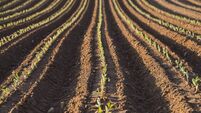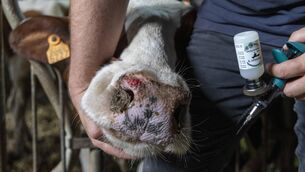Automated classification increased price range
“We proposed a spread of at least 40 cent to 45 cent per kilogram across the range of animals but did not succeed at the time,” said Cormac Healy of Meat Industry Ireland (MII), during a report on carcase classification to the Oireachtas Joint Committee on Agriculture and Food.
But farmers who supply top quality cattle now get up to 22c per kg more than a supplier of inferior cattle, according to the spokesman for MII, which represents beef processors.
“One must bear in mind that some producers favour the flat pay system because it may suit the poorer quality animals. With flat pricing, however, poorer animals benefit at the expense of higher quality animals,” he told the Committee.
He reported that between 85% and 90% of cattle slaughtered at export approved premises in 2005 were graded by the automated carcase classification system. It is in place at 24 of the country’s 35 export approved premises, with each machine grading between 300 and 350 carcases per day.
The Department of Agriculture has expressed satisfaction with the new grading technology, following about 55,000 independent checks in the past year, during 750 visits to plants. They found 80% accuracy in grading.
Unannounced visits are made to plants using the new grading machines at least every six weeks by the Department’s standards panel.
Department officers assess carcase classification and the results produced by the machines, including checking adherence to national carcase dressing specifications.
“In the near future, a European inspection of the system will be introduced. The grading system in each member state is assessed by a European panel on a rotating basis and we have one of those inspections at the end of April,” said Mr Healy.
“Saleable meat yield is the next step, and technology is capable of predicting it,” he told the Committee.
“There is work to be done to get the saleable yield part right, because we no longer sell carcases of beef,” the Committee was told by Ciarán Fitzgerald, chairman of Meat Industry Ireland.
He said: “People consume boneless meat cuts, and we need a better correlation between the yield of those products and the information the farmer gets. There is a commitment at industry level to doing that and, in parallel, to encourage producer groups, because many of the niche markets are best served by individual contractors with producer groups.”
Vision-image technology is used to predict saleable meat yield, muscle size and muscle distribution. It would have to be adapted to the EUROP grid, but results were favourable in Irish trials in 1990 and 2000.
“One of the challenges that lies ahead concerns the required cutting specification,” said Mr Healy. “Carcases are cut up into primals and then into consumer cuts. Different customers, outlets and markets have different cutting specifications and, therefore, while there is a standard EUROP grid for grading, not every company throughout Ireland operates to the same cutting specifications.”
He said the industry in Ireland is well ahead of counterparts in many other member states, being first in the EU to use automated carcase classification.










